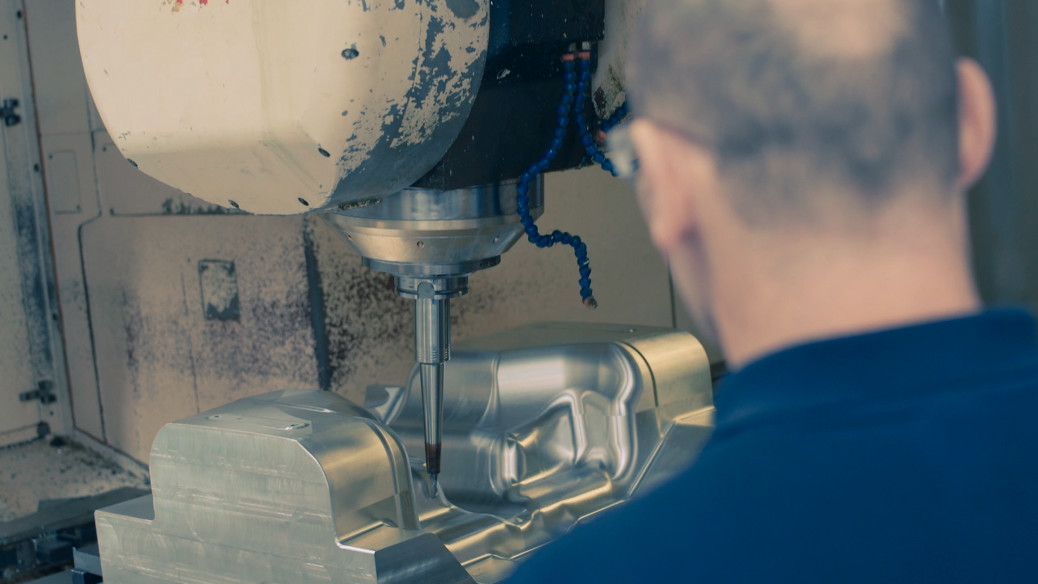
The concept of multi-axis machining has been around for a long time, making fabrication processes for various parts much easier and convenient for engineers across the globe. One of the most trending multi-axis machining setups these days is that of 5-axis machining, which is being used in a wide range of industries owing to its many advantages.
The reason behind this popularity over other multi-axis machining configurations like 3- or 4-axis machining, or the more similar 3+2 axis machining, is that it offers a comprehensive package including benefits in terms of functionality, cost, and speed; the details of which will be outlined below.
What makes the aerospace industry so important?
In this article we will explore how the aerospace industry, which has been growing steadily for a long time, makes use of 5-axis machining. With an estimated revenue generation of $824 billion in 2018 from only commercial flights, this industry is surely one in which entrepreneurs will lead the way in utilizing modern technologies.
5-Axis machining: what is it?
A type of multi-axis machining, it is an interesting setup that yields very precise results for manufacturers. Putting it very simply, a 5-axis machine is a CNC machine that is capable of 5 kinds of distinct motion relative to the workpiece, which is held in a work holding mechanism.
Three of these motions are along the three commonly identified axes (X, Y, and Z) that are used to define a three-dimensional space. The other two motions are rotational motions of the workpiece, which can be achieved about any of the three axes mentioned above. These additional motions provide great flexibility for fabricators, which is not possible with most other configurations.
How is it better than other multi-axis machining?
The benefits that 5-axis machining offers are profound. The two most relevant advantages of this machining process are as follows:
Complex Geometry
This is perhaps the biggest reason it has gained such success in certain industries, but not so much in others. The 5-axis setup is capable of machining extremely complex parts due to the five kinds of motions it offers.
In the realm of aerospace, this advantage is of immense importance as aircraft and spacecraft are often assemblies of many odd-geometry parts. As highlighted in this article, 5-axis machining has been used for the fabrication of complex structures such as wing supports for the F-16 fighter aircraft.
Another example can be taken from NASA’s Orion, whose bulkhead was dome-shaped and had numerous holes drilled into it perpendicular to its curved surface. Without the facility of two rotation movements in addition to linear motions, the drilling operation would have been cumbersome for machine operators, and the result still would not be within the tolerance achieved through this process.
Time-Saving
Another significant advantage of this machining process is that it is relatively quick compared to others. In a normal 3- or 4-axis CNC machine, a number of re-orientations of the work holding mechanism are required, since neither the tool nor the mechanism itself can orient the workpiece in a new, specific direction. With the five motions of 5-axis CNC machines, this phase is eliminated from the fabrication process, and thus massive savings are experienced in terms of time.
The aviation industry has been faced with increasing demands from commercial airlines and defense sectors across the world in recent years. In the five-year period from 2018-2022, the aerospace industry is expected to deliver around a staggering 11,000 aircraft, with current order backlogs almost touching the lengthy time period of 10 years. With this demand pattern, the aerospace industry needs to employ fast manufacturing processes that can help it achieve higher production rates.
Autodesk PowerMill: multi-axis machining with the best CAM software.
With the rising popularity of CNC machining in several industries, its future is undoubtedly bright. Most companies are now coming to realize that although purchasing a multi-axis CNC machine is not a small investment, the return on investment is surely worth the money.
Given this prediction, the next step for manufacturers is to get hold of the best tools available for CNC machining. Autodesk PowerMill is leading CAM (computer aided manufacture) software innovation that empowers engineers. With modules ranging from tool-path selection, collision detection and prevention, as well as additive manufacturing, Autodesk PowerMill is the perfect match for professional engineers willing to implement 5-axis machining in their industries.


